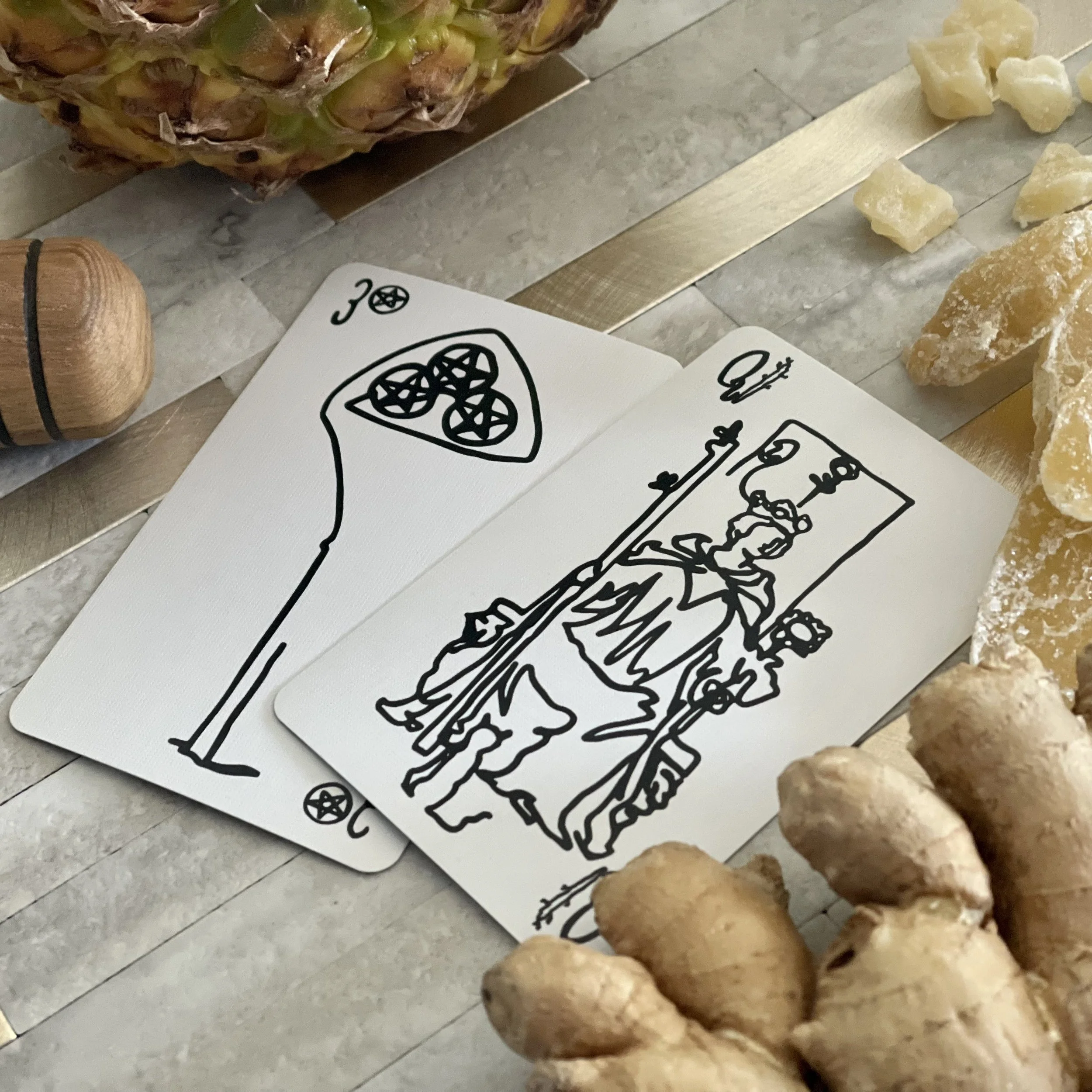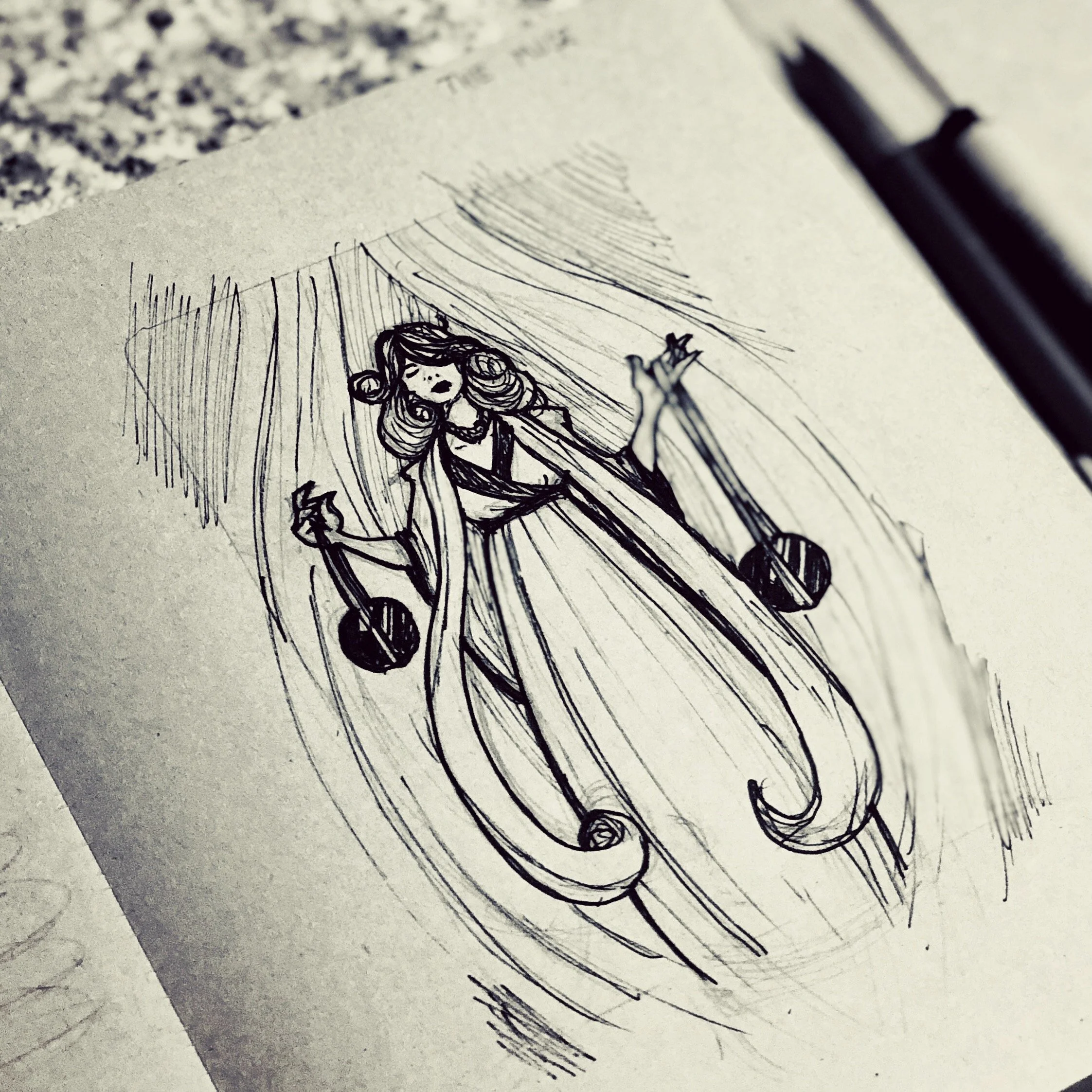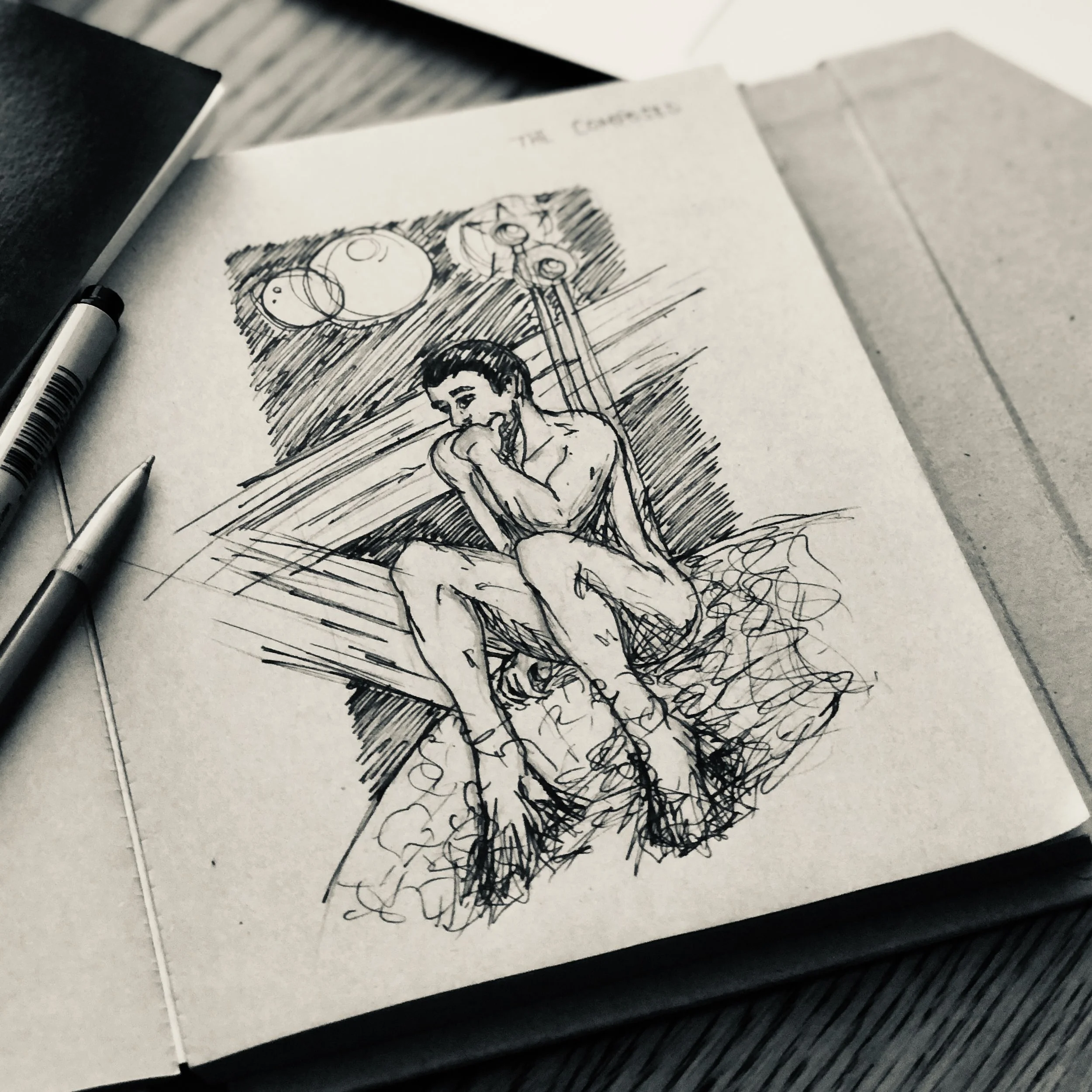The Power of Tarot as a Creative Tool
One of the reasons that I love using tarot as a creative tool is that it solves the “blank page problem.” That’s when you don’t know how to start, and so the blank page (or canvas or whatever) just stares at you, daring to mar its unsullied perfection.
Most people in my experience prefer responding to a prompt over creating ex nihilo, as it were. We responders not only benefit from but often need an external starting point, whether that’s another work that inspires them, a creative prompt, or a rough draft that they can rip apart.
Even those who consider themselves self-starters aren’t usually creating from nothing. (Nothing comes from nothing. That’s the miracle of the Big Bang.) A stray phrase from a song you didn’t realize you heard at the coffee shop may have contributed to that opening image, a strange pattern of shadows may have subtly inspired that use of negative space in a painting, or a field of wildflowers may be the foundation of that new textile.
There’s nothing wrong with taking inspiration from the world around you.
There’s also nothing wrong with using tools to help you find that inspiration at your desk rather than in the wild and unpredictable world.
That’s not to say that you should stay cloistered away if you want to be inspired. Eventually the well runs dry because you work with what you know. But if you’re not feeling into a trip to the park or art museum or store, where you’re bound to see or hear interesting things, tarot readers have a resource at their disposal: their cards.
I’ve demonstrated how to use tarot for writing in the past. I’ve created a few tarot spreads for writers and a month-long tarot challenge to help writers find their words. I also teach a class on Tarot for Writers, and I’m creating a deep workbook of exercises for Tarot for Writing that will be coming to Kickstarter soon. Even three of my decks (the Life Line Lenoracle, the Color Outside the Line edition of the Life Line Tarot, and the Seaborn Kipper) all include reflective questions in the guidebook that can serve as writing prompts to help you make the most of your decks when you aren’t trying to divine the future.
So while I love using tarot for inspiring characters and stories, you can use tarot for more than writing.
A common creative prompt for, say, visual arts, is the tarot deck itself. I regularly see artists devise their own spin on tarot cards. At the very least, it can be a version of 78 “draw this in your style” prompts. And sometimes, artists seem to have little to no knowledge of the cards, their meanings, or their history beyond just their titles and a vague idea of what someone once put into a card. But hey! Who said you have to create a deck that works like every other deck? That’s the beauty of learning ways of reading tarot beyond relying on the basics of the Rider/Smith-Waite Tarot and its familiar imagery.
(And if you don’t know how to read tarot with those kinds of layers, you should take my self-paced intensive fundamentals, Read Tarot like a Nerd. You will definitely learn how to read the cards through different layers.)
Of course, there’s more to the cards than just one deck’s imagery. And the cards don’t have to be interpreted as cards. Even familiar imagery may inspire a new visual story be told. If you see the Lovers card and decide to paint a wedding interrupted by a fiery angel of vengeance, that could be an excellent painting with little resemblance to the Lovers card as we know it.
Or you might pull the 5 of Pentacles and decide to illustrate the text for “The Little Match Girl,” letting the card inspire a story that you choose from those already written in order to practice a particular skill.
But the majors and Pamela Colman Smith’s illustrated minors aren’t the only sources of inspiration for the visual arts. I remember early on—maybe 8th grade—I wanted to make a deck of playing cards with my own suit designs. I remember there was going to be a suit of leaves and a suit of wings with halos. I don’t remember the rest. The structure was probably inspired by the Secret of Mana (or the common elementals of many Japanese RPGs), but it could have as easily been the tarot deck that I was just about to start digging into around that time.
What would a new set of tarot suits look like to you?
How would you design the 6 of Angels or the 4 of Undines? And once you did, could you make a geometric pip design into a needlepoint or textile pattern? Could the suits become icons in a brick-breaking game you’re coding or the basis for a series of logos you’re designing? Or do you create a magical pocket dimension around tarot cards for a tabletop game? (Hello, Pathfinder’s standalone adventure “The Harrowing.”)
The beauty of tarot as a creative tool is that it’s rich with visual symbols and textual meanings, and it also invites you to listen to your intuition. You can even step into the world of the cards (path working) and uncover greater depths to them.
The inspiration for creativity may come from some stimulus in the outer world, but the act of creation comes from within you. Knowing which words and colors and patterns to choose is based on an inner sense that has been refined through practice.
If you’re new to the game, it might be a little more rough and ready than refined. If so, lean in to your intuition, and it will help you make up for time not spent on your craft.
But if you’ve been doing creative work for a while, that voice may be loud and clear to you without you even noticing. Just imagine if you intentionally cultivated your intuition along with your craft. I’m not saying that you should replace your current sources of inspiration with a tarot deck. But if you’re open to new sources, consider adding it into the mix.
Tarot helps you connect with your intuition and to your guiding inner voice. That voice could be a spirit guide, but it could also be a Muse. And if you’re really tapped in as a creative diviner, your Muses and spirit guides are probably related, if not one and the same. Your emotions, your intuition, your passions, and your creativity are all interconnected in many spiritual practices (along with your sensuality or sexuality—yum!). Why not open yourself to the messages they have to share with you?
So if you find yourself stuck without inspiration, it’s worth picking up a tarot deck for two reasons. First, it can inspire you even if you have no idea what it is you’re looking at for all the reasons I listed already. Second, tarot and other forms of divination can help you connect with that brilliance inside of you that allows you to trust in your own creativity as an extension of your soul.
I started this post with “one of the reasons that I love using tarot as a creative tool,” but that second reason is ultimately the more important. And the power of your inner connection will be there with you even when you don’t have your cards at hand.



